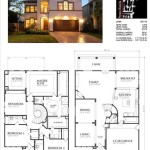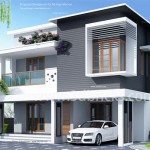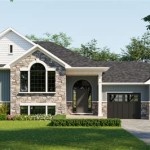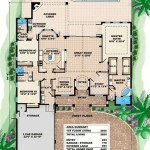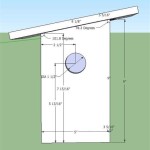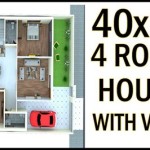Understanding Cool House Plans: A Comprehensive Guide
Choosing a house plan is a pivotal step in realizing the dream of owning a home. With a myriad of options available, navigating the landscape of house plans can be overwhelming. This article provides a comprehensive understanding of “cool house plans,” encompassing their defining characteristics, considerations for selection, and resources for finding plans that align with specific needs and preferences.
Defining "Cool" in House Plan Design
The term "cool" is subjective and can encompass different design elements depending on individual preferences and current trends. However, in the context of house plans, "cool" often refers to plans that incorporate modern aesthetics, innovative layouts, and a focus on functionality and livability. This may involve features such as open floor plans, expansive windows that maximize natural light, and integration of outdoor living spaces.
Modern architectural styles frequently associated with "cool house plans" include contemporary, mid-century modern, and minimalist designs. These styles often prioritize clean lines, simple forms, and a seamless connection between the interior and exterior environment. The use of sustainable materials and energy-efficient technologies can also contribute to the perceived "coolness" of a house plan.
Beyond aesthetics, a "cool" house plan is also characterized by its ability to cater to the needs of modern lifestyles. This may involve incorporating features such as home offices, entertainment areas, and flexible spaces that can adapt to changing needs. A well-designed "cool" house plan prioritizes functionality and efficiency, ensuring that the home is comfortable, convenient, and conducive to a fulfilling lifestyle.
Key Considerations When Selecting Cool House Plans
Selecting a house plan is a significant undertaking that requires careful consideration of various factors. Beyond personal preferences, it is crucial to evaluate practical aspects such as budget, lot size, zoning regulations, and future needs. A thorough assessment of these factors will help ensure that the selected house plan is not only aesthetically pleasing but also feasible and sustainable in the long term.
Budget: Establishing a realistic budget is paramount before embarking on the search for a house plan. The budget should encompass not only the cost of the house plan itself but also the expenses associated with construction, materials, labor, permits, and landscaping. It is advisable to obtain multiple cost estimates from builders and contractors to gain a realistic understanding of the overall project cost.
Lot Size and Orientation: The size and orientation of the building lot will significantly influence the selection of a house plan. A larger lot may accommodate a more expansive house design, while a smaller lot may necessitate a more compact and efficient layout. The orientation of the lot, including sun exposure and prevailing winds, should also be considered to optimize energy efficiency and comfort.
Zoning Regulations and Building Codes: Zoning regulations and building codes vary by location and dictate the types of structures that can be built on a particular property. These regulations may specify setbacks, height restrictions, and other requirements that must be adhered to. It is essential to consult with local authorities to ensure that the selected house plan complies with all applicable regulations.
Lifestyle and Future Needs: A house is a long-term investment, and it is crucial to select a plan that aligns with current lifestyle needs and anticipated future requirements. Consider factors such as family size, hobbies, and potential for future expansion when evaluating house plans. A well-designed plan should be adaptable and capable of accommodating evolving needs over time.
Sustainability and Energy Efficiency: Incorporating sustainable design principles and energy-efficient technologies can significantly reduce the environmental impact and operating costs of a home. Consider features such as solar panels, rainwater harvesting systems, energy-efficient windows, and insulation when evaluating house plans. A sustainable home is not only environmentally responsible but also more comfortable and cost-effective in the long run.
Resources for Finding Cool House Plans
Numerous resources are available for individuals seeking cool house plans. These resources include online plan providers, architectural firms, and home design magazines. Each resource offers a unique set of advantages and disadvantages, and it is important to carefully evaluate each option before making a decision.
Online Plan Providers: Online plan providers offer a vast selection of house plans in various styles and sizes. These providers typically offer detailed floor plans, elevation drawings, and 3D renderings, allowing prospective homeowners to visualize the finished product. However, it is crucial to verify the credentials and reputation of online plan providers before making a purchase. Look for providers that offer modifications and customization options to tailor the plan to specific needs.
Architectural Firms: Engaging the services of an architectural firm offers the advantage of a customized design solution tailored to specific site conditions and lifestyle requirements. Architects possess the expertise to create unique and innovative house plans that maximize functionality and aesthetics. However, architectural services can be more expensive than purchasing pre-drawn plans.
Home Design Magazines and Websites: Home design magazines and websites showcase a wide range of architectural styles and design trends, providing inspiration and ideas for prospective homeowners. These resources often feature photographs and descriptions of completed projects, allowing individuals to visualize different design possibilities. While these resources may not provide complete house plans, they can serve as a valuable source of inspiration and guidance.
Local Builders and Contractors: Local builders and contractors often have access to a network of architects and designers and can provide valuable insights into local building codes and construction practices. Consulting with a builder or contractor early in the process can help ensure that the selected house plan is feasible and cost-effective to construct.
Evaluating Plan Options: Regardless of the chosen resource, it is crucial to carefully evaluate plan options before making a decision. Consider factors such as the square footage, number of bedrooms and bathrooms, layout, and features. Obtain multiple perspectives and consult with professionals to ensure that the selected plan meets specific needs and preferences.
Understanding Plan Modifications and Customization
Most house plans, whether purchased online or obtained from an architectural firm, can be modified to suit individual needs and preferences. Plan modifications may involve altering the floor plan, adding or removing windows, changing the roofline, or incorporating custom features. The extent to which a plan can be modified will depend on various factors, including the complexity of the design, the structural integrity of the building, and local building codes.
It is essential to consult with a qualified architect or structural engineer before making any significant modifications to a house plan. These professionals can assess the feasibility of the proposed changes and ensure that they comply with all applicable regulations. Modifying a house plan can be a complex process, and it is important to work with experienced professionals to avoid costly errors and delays.
Customizing a house plan may also involve selecting specific materials, finishes, and fixtures. The choice of materials can significantly impact the aesthetics, durability, and energy efficiency of a home. Consider factors such as cost, availability, and environmental impact when selecting materials. Work with a qualified interior designer or building contractor to select materials and finishes that complement the overall design and meet specific budget requirements.
The cost of plan modifications and customization can vary depending on the scope of the changes. Minor changes, such as adding or removing a window, may be relatively inexpensive, while more significant alterations, such as changing the floor plan, can be more costly. It is important to obtain a detailed estimate from an architect or engineer before proceeding with any modifications.
The process of selecting and modifying a house plan is a significant undertaking that requires careful planning and attention to detail. By understanding the various factors involved and working with qualified professionals, prospective homeowners can create a home that is both aesthetically pleasing and functionally efficient.
The Role of Technology in Cool House Plans
Technology plays an increasingly significant role in the design and visualization of cool house plans. Computer-Aided Design (CAD) software allows architects and designers to create detailed and accurate plans, elevations, and 3D renderings. This technology enables prospective homeowners to visualize the finished product before construction begins, facilitating better communication and decision-making.
Building Information Modeling (BIM) is another technology that is gaining popularity in the construction industry. BIM is a process that involves creating a digital representation of a building, incorporating all aspects of the design, construction, and operation. BIM allows architects, engineers, and contractors to collaborate more effectively, identify potential problems early in the process, and optimize building performance.
Virtual reality (VR) and augmented reality (AR) technologies are also being used to enhance the visualization of house plans. VR allows prospective homeowners to experience a virtual walkthrough of their future home, providing a realistic sense of space and design. AR allows homeowners to overlay digital information onto the real world, such as visualizing furniture placement or exploring different material options.
Smart home technology is also influencing the design of cool house plans. Smart home systems allow homeowners to control various aspects of their home, such as lighting, temperature, security, and entertainment, using their smartphones or other devices. Integrating smart home technology into a house plan can enhance comfort, convenience, and energy efficiency.
The increasing use of technology in the design and construction of homes is transforming the industry and enabling the creation of more innovative and sustainable designs. By embracing these technologies, prospective homeowners can create homes that are not only aesthetically pleasing but also functionally efficient and technologically advanced.

Cool House Plans With S Houseplans Blog Com
The Most Beautiful House Plans Right Now Houseplans Blog Com

Cool House Plans With S Houseplans Blog Com

Modern And Cool House Designs With Open Floor Plans Blog Eplans Com
The Most Beautiful House Plans Right Now Houseplans Blog Com

House Plan 51981 Farmhouse Style With 2373 Sq Ft 4 Bed 2 Bath
The Most Beautiful House Plans Right Now Houseplans Blog Com

Three Bedroom Cool House Concept Home Design Plan Floor Plans

Modern And Cool House Designs With Open Floor Plans Blog Eplans Com

The Cool House Plans Company Searching Made Simple

